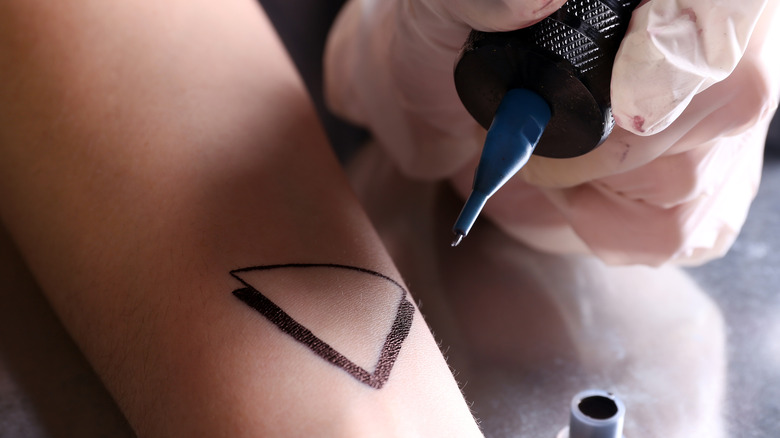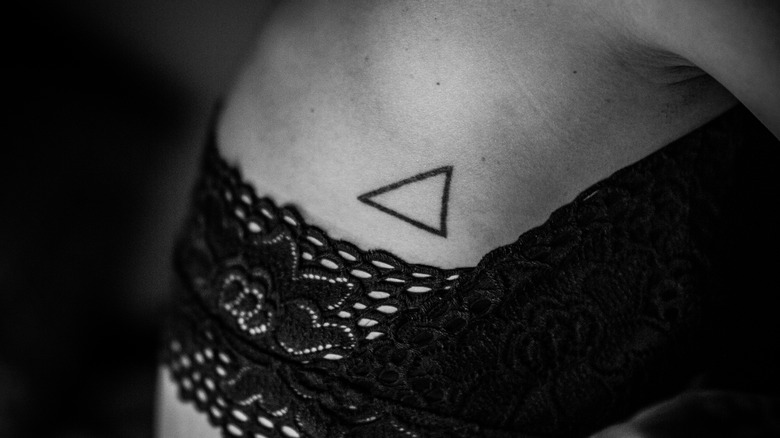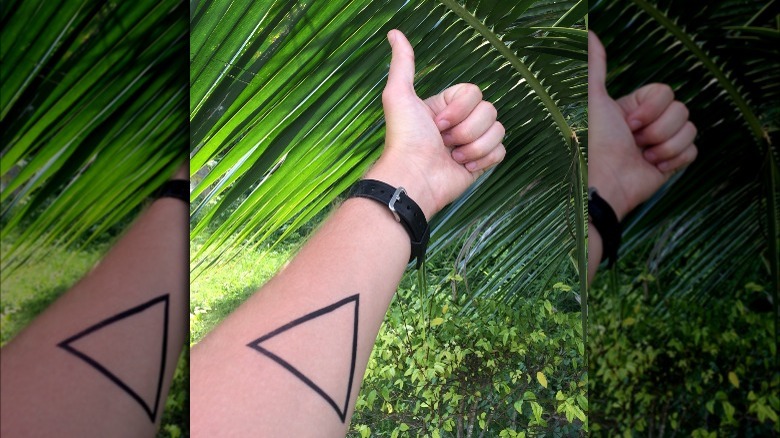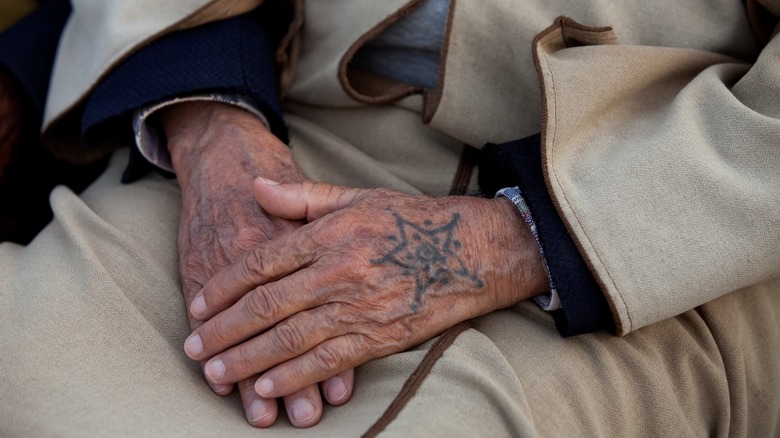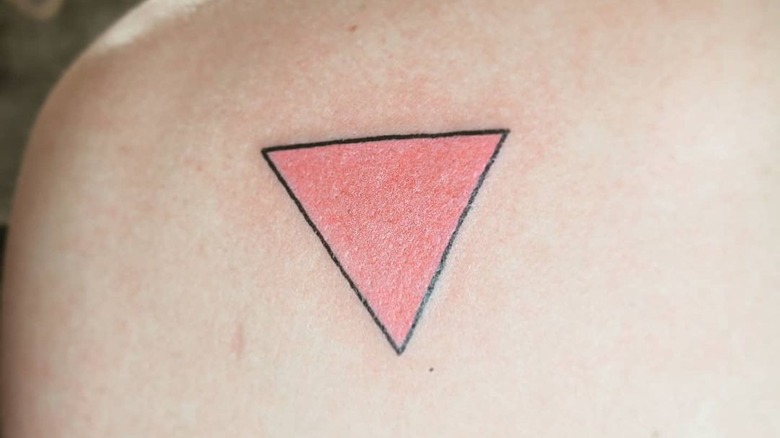The Real Meaning Of A Triangle Tattoo
Tattoos are incredibly popular these days. But, rather than covering themselves from collarbone to wrist, many people — particularly young, famous women like Kylie Jenner and Ariana Grande — opt instead for so-called "baby tattoos."
These tiny, delicate markings are often placed on highly visible areas, such as hands and wrists, and give the appearance of being heavily tattooed without actually being heavily tattooed.
Many of these smaller trendy tattoos have little meaning beyond looking cute, but there are exceptions. For example, the meaning behind a semicolon tattoo, small and dainty as it might be, is actually more poignant than you'd expect.
Likewise, a triangle often holds a much deeper meaning. It's one of the oldest symbols known to humankind, so it can be used to mean many things and can be incorporated into numerous designs. Keep reading to learn about the different kinds of symbolism behind triangle tattoos.
Triangles have various meanings in different cultures and contexts
A post on Quora from Streetfelt Tattoo in Hawaii notes that triangle tattoos actually have several potential meanings. The geometric shape with three sides (and points) can represent family (mother, father, and child), time (past, present, and future), the soul (mind, body, and spirit), or even the self (thought, feeling, and emotion).
Celtic culture also utilizes the symbol for knots and trinity designs. Three is a powerful number in numerology, too. One means force, two means an opening, and three means the wisdom created by interlocking the two ideas.
A triangle's orientation can also indicate a deeper meaning. When it points up, it can mean solar, active, masculinity, or father; pointing down can mean lunar, feminine, cave, or mother. Two triangles combined can represent humanity, while these tattoos often symbolize creativity, too.
Triangle tattoos also symbolize wisdom, love, and connection
Tattoo Me Now, an online resource for artists and aficionados alike, notes that, in Greek culture, the Delta triangle glyph symbolizes a doorway to higher wisdom. The combination of thought and emotion supposedly opens the mind, making the triangle a very sacred symbol.
Likewise, in Norse culture, three interlocking triangles, known as a Valknut, were said to protect warriors in battle and carry their bodies to Valhalla if they perished.
Tattoo SEO, another online resource for artists and tattoo enthusiasts, notes the popularity of the so-called "lovers' triangles tattoo," which positions one triangle upside down and the other right-side-up, with one colored blue and one red. Couples and BFFs often share this tattoo by getting one part of the design inked on each person.
Triangles can have religious meaning
Triangle tattoos may have religious connotations because the three sides can be seen to represent the Father, Son, and the Holy Spirit in Christianity, per Streetfelt Tattoo's Quora post. The design can also represent the all-seeing Eye of Providence, symbolizing how God is always watching over his devoted followers.
However, this particular symbol also has ties to occultism thanks to its connection to the Illuminati.
One of the most famous and well-known star designs in the world is the Star of David, Beauty Mag notes. Created by connecting two triangles, with one pointing up and the other pointing down, this symbol is predominantly associated with Judaism.
However, those who closely follow the teachings of the Torah typically consider tattoos to be impure and are therefore unlikely to get the symbol inked on their skin. As a result, it's far more likely that someone will get a Star of David tattoo as a symbol of the balance between their own male and female energies rather than to show off their Jewish faith.
Elsewhere, in the Hindu and Buddhist religions, the Shaktona, which has a similar look to the Star of David, combines the energies of Shiva and Shakti. It similarly symbolizes a balance between male and female.
The LGBTQ+ community reclaimed the pink triangle tattoo
Although a pink triangle might seem like a simple tattoo on the surface, look a little deeper, and its meaning is incredibly potent.
As the U.K. shop Vivid Ink Tattoos notes on its website, pink triangles have been repurposed to show pride rather than shame, similarly to how the word "queer" was reclaimed by the LGBTQ+ community after initially being used as a derogatory term.
The symbol was originally used by the Nazi regime to mark those they considered homosexual. Men thought to be queer were frequently sent to concentration camps and even kept separate from the other prisoners so they wouldn't "infect" them. They were also often castrated or used for shocking medical experiments.
The pink triangle was reclaimed as recently as 1977 during protests against discriminatory housing laws in Florida. Likewise, HIV activists subsequently used it to bring awareness to their cause, making a compelling link between how HIV patients were left to fend for themselves just as queer men perished in Nazi Germany.
Nowadays, the LGBTQ+ community wears the pink triangle with pride — and frequently in tattoo form. The triangle is often inverted, to separate it from its horrifying history.
